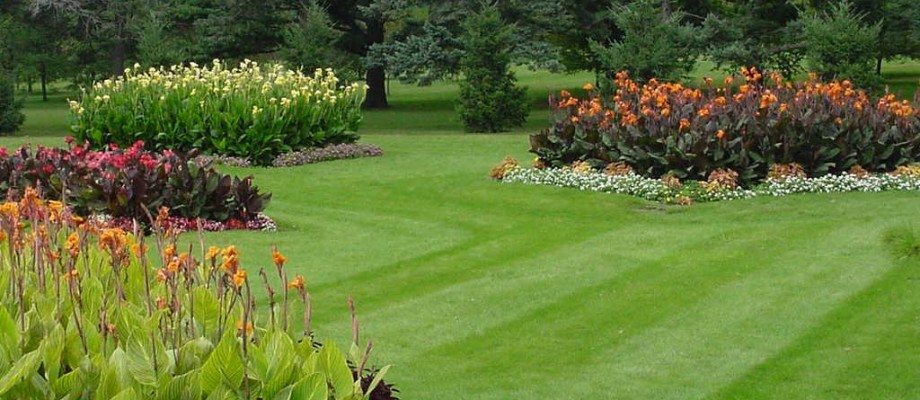
To Weed or Not To Weed
Finally, use a roller to pack down the soil, then grade the area with a metal rake. Be as thorough as you can — remember, once you’ve put your seed or sod down, you can’t go back and regrade.
To Seed or Not to Seed
Long used by farmers to sow large fields, hydroseeding solves one of the main problems of hand seeding: even dispersal of seeds.The grass seed — a mix of varieties blended for your climate and the type of use your lawn will get — is mixed into a pulp made from virgin wood fibers, fertilizer and binding agents.
Shave and a Haircut
Taller grass promotes better root development, Paul says, as well as shading the ground so it doesn’t dry out as fast. An added benefit: the taller grass blocks the sun that weed seeds require to germinate. And don’t believe for a moment that leaving grass taller is going to mean mowing more often, says Gary. “There’s a big misunderstanding that a lot of people have that if they cut it shorter, they won’t have to mow it as often,” say Gary. “But that’s absolutely false; it renews itself so fast that it doesn’t save you any time.”
Water, Water Everywhere
“Water only once a week, but water deep” is the rule according to Paul. A weekly soaking helps roots extend deeper into the soil, while frequent shallow waterings tend to lead to thatch, that unsightly web of dry brown runners just above the soil. Watering deeply can also prevent chinch bugs, a pest that tends to attach dried, stressed out lawns across the midsection of the country.
To figure out how much water your lawn needs, take your soil type into account: sandy soils dry out faster, while clay soils hold moisture longer and don’t require watering as often.For a newly seeded lawn, water every day for five to 10 minutes only. Your goal is to dampen the seeds without causing runoff that might wash them away or mar the surface with gullies. After the seeds sprout and the new grass is a half inch tall, water once a day for 15 to 20 minutes.
Please Feed Me
Weeds, Go Away
Mowing regularly helps too, because it tops off weeds like dandelions and crabgrass before they have a chance to scatter their seeds.When you do find yourself compelled to do battle against a path of weeds, Paul recommends using one of the new “natural” herbicides that derive their potency from corn gluten, salts from fatty acids or other nonchemical sources.
Air Supply
Types of Grass
Some lawns have finer textures (think golf courses), while others feel like Astroturf under your feet. There are hundreds of types of grass available, and new varieties are developed every year.
As with all plant choices, climate plays a big role in determining which type of grass will work best for you — soil type, rainfall and other factors also come into it. As a general rule, cool-season grasses go dormant during the warm weather, and warm-season grasses go dormant during the coolest months of the year; in areas where it’s possible to have a green lawn all year round, you want a mixture of both these types.
“I’ve lived in seven different states and I’ve had seven different lawns,” says master gardener John Griggs, who believes a local nursery is one of the best sources of information on which type of grass will work best in your area. Here’s a list of the most popular choices:
- Zoysia grass
- Bermuda grass
- St. Augustine grass
- Bahia grass
- Centipede grass
- Bentgrass
- Bluegrass
- Fine fescues
- Tall fescues
- Ryegrass
- Shade: St. Augustine grass, fine fescue, tall fescue, ryegrass, bentgrass
- High traffic: Zoysia grass, improved Bermuda grass, Bahia grass, regular Bermuda grass, perennial ryegrass
Follow these tips and transform your garden from this:

Into this:
